Holi
India
The world's most vividly colorful festival.

Rooted in ancient traditions as a harvest festival, Holi originally marked the end of the winter season and the blossoming of spring, symbolizing the anticipated bounty of the harvest and the hopeful promise of new life and renewal. As time progressed, Holi became deeply intertwined with Hindu mythology, most notably through the captivating tale of Prahlad and the demoness Holika. This powerful narrative, representing the ultimate victory of righteousness over malevolence, is solemnly commemorated on the eve of Holi with the symbolic burning of Holika in a bonfire.
What makes Holi particularly unique is its remarkable ability to transcend religious and social barriers. It serves as a powerful force in promoting unity and harmony amongst people from all walks of life in India and beyond. On this day, societal differences are deliberately set aside as individuals, irrespective of their caste, creed, or socioeconomic status, joyfully come together to participate in the shared festivities. The act of playfully smearing and drenching each other with colorful powders (gulal) and water breaks down inhibitions and fosters a sense of universal brotherhood and sisterhood.
Holi beautifully embodies India's rich cultural heritage, seamlessly blending age-old customs with profound religious symbolism. This unique fusion not only provides an opportunity for spiritual reflection but also powerfully fosters social cohesion and a spirit of joyous camaraderie among participants.
Throughout the celebrations, the air resonates with enthusiastic greetings of "Happy Holi," a simple yet profound expression of goodwill and festive cheer that encapsulates the spirit of this truly remarkable festival.
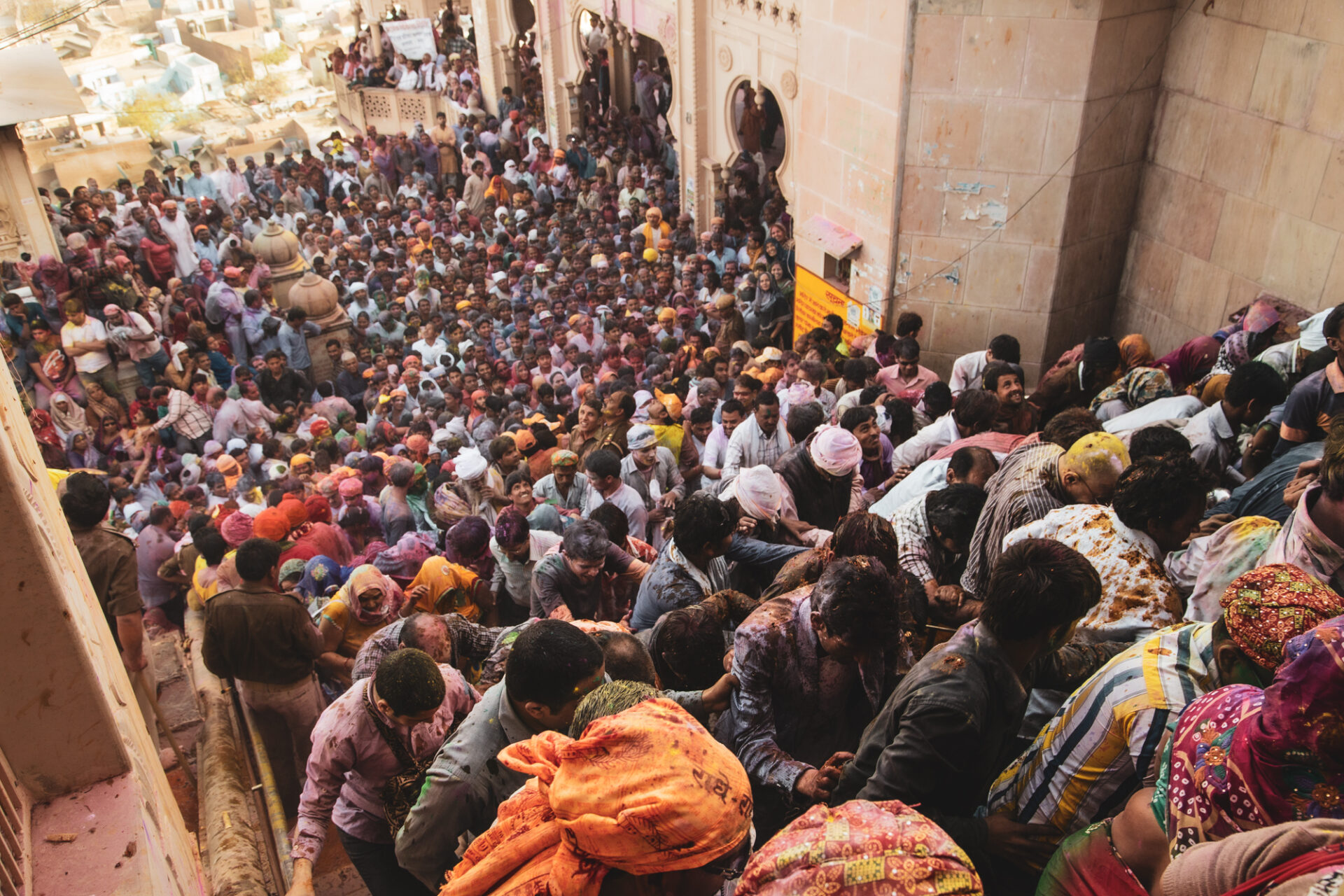
The Holi festival in the vicinity of Mathura is known as a fervent celebration that lasts for two weeks.
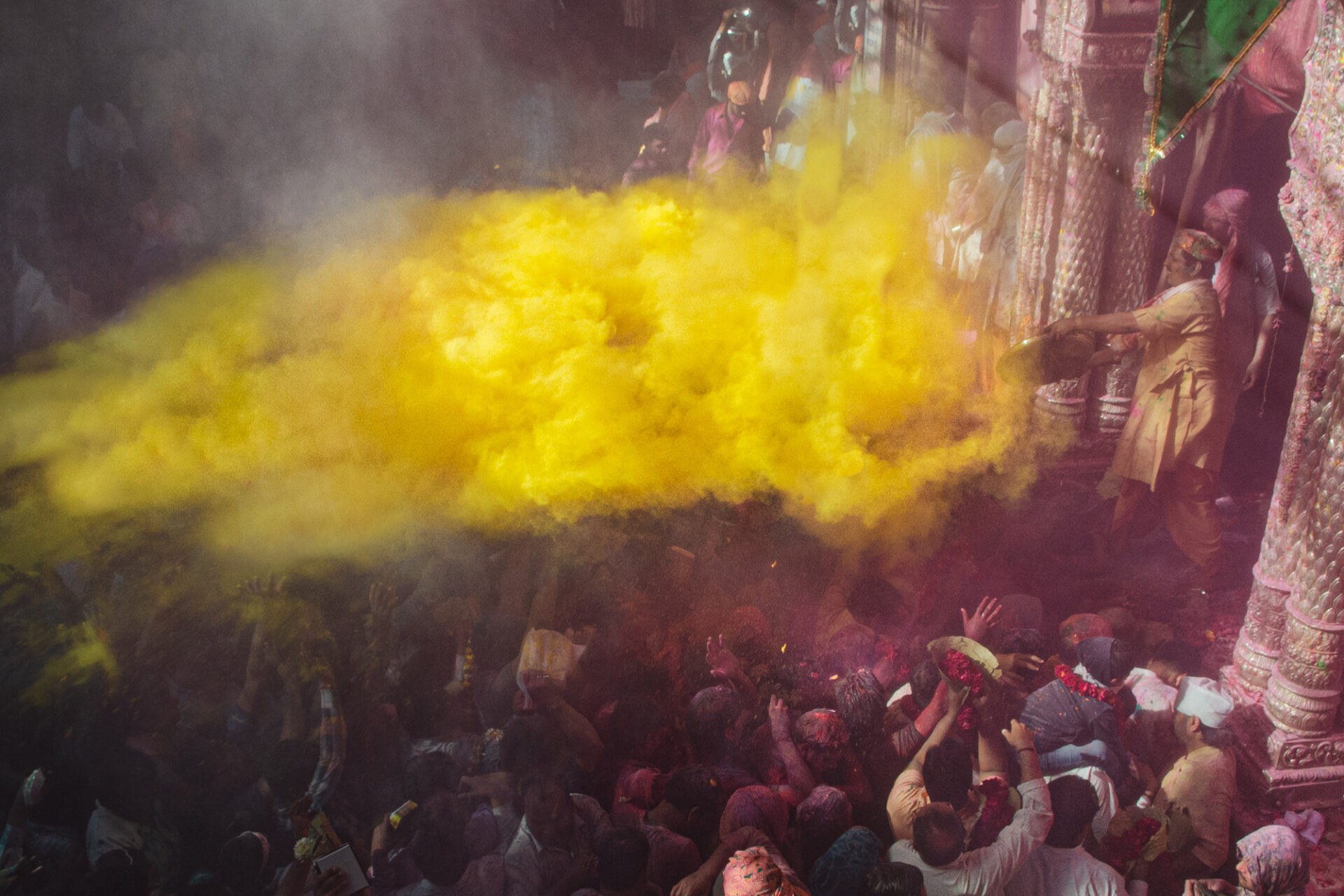
The Banke Bihari Temple in Vrindavan is deeply associated with
Lord Krishna and can be considered the focal point of Holi festival celebrations.
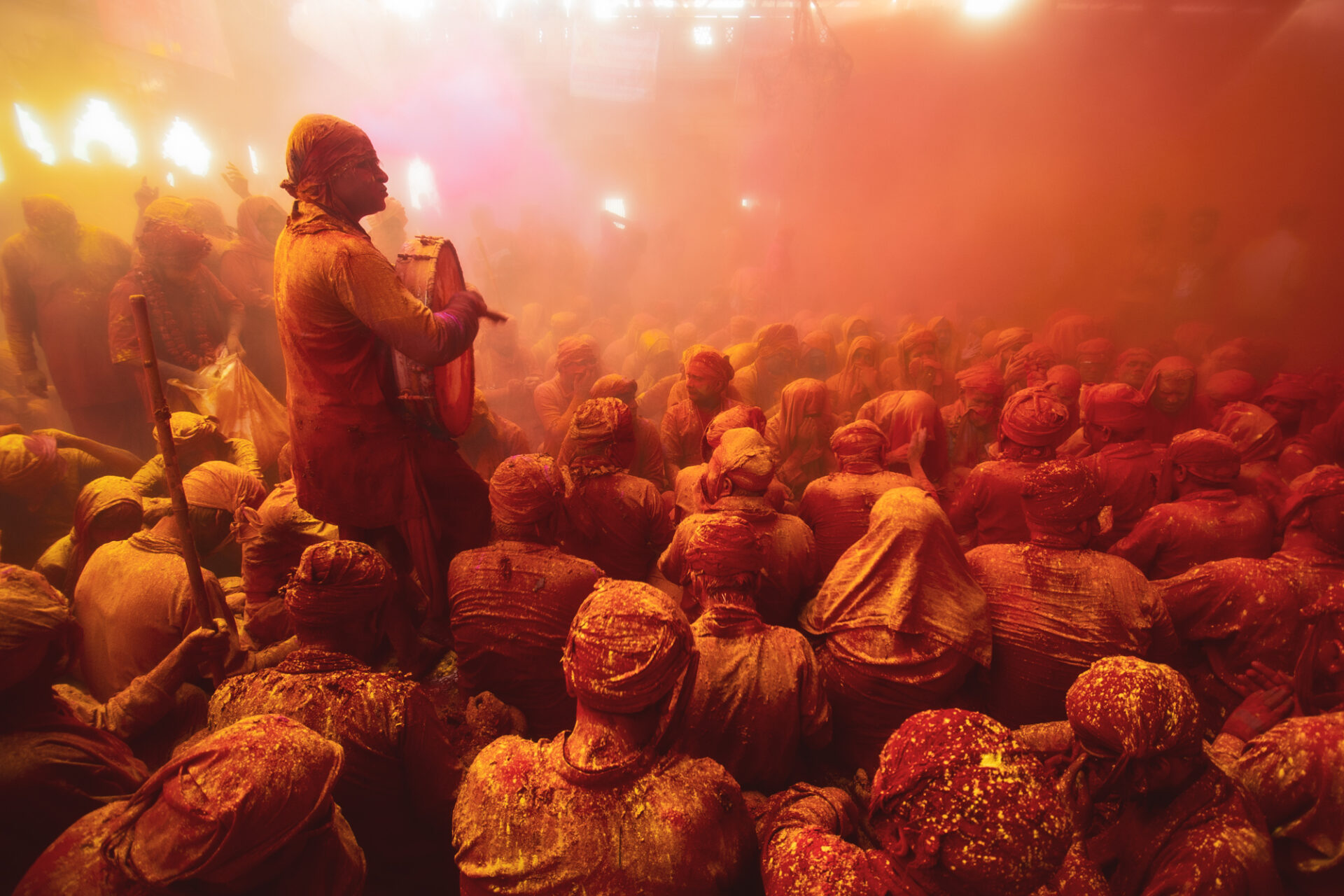
In ancient times when colored powders were not used, it is said that in rural areas, dung and urine were thrown instead.
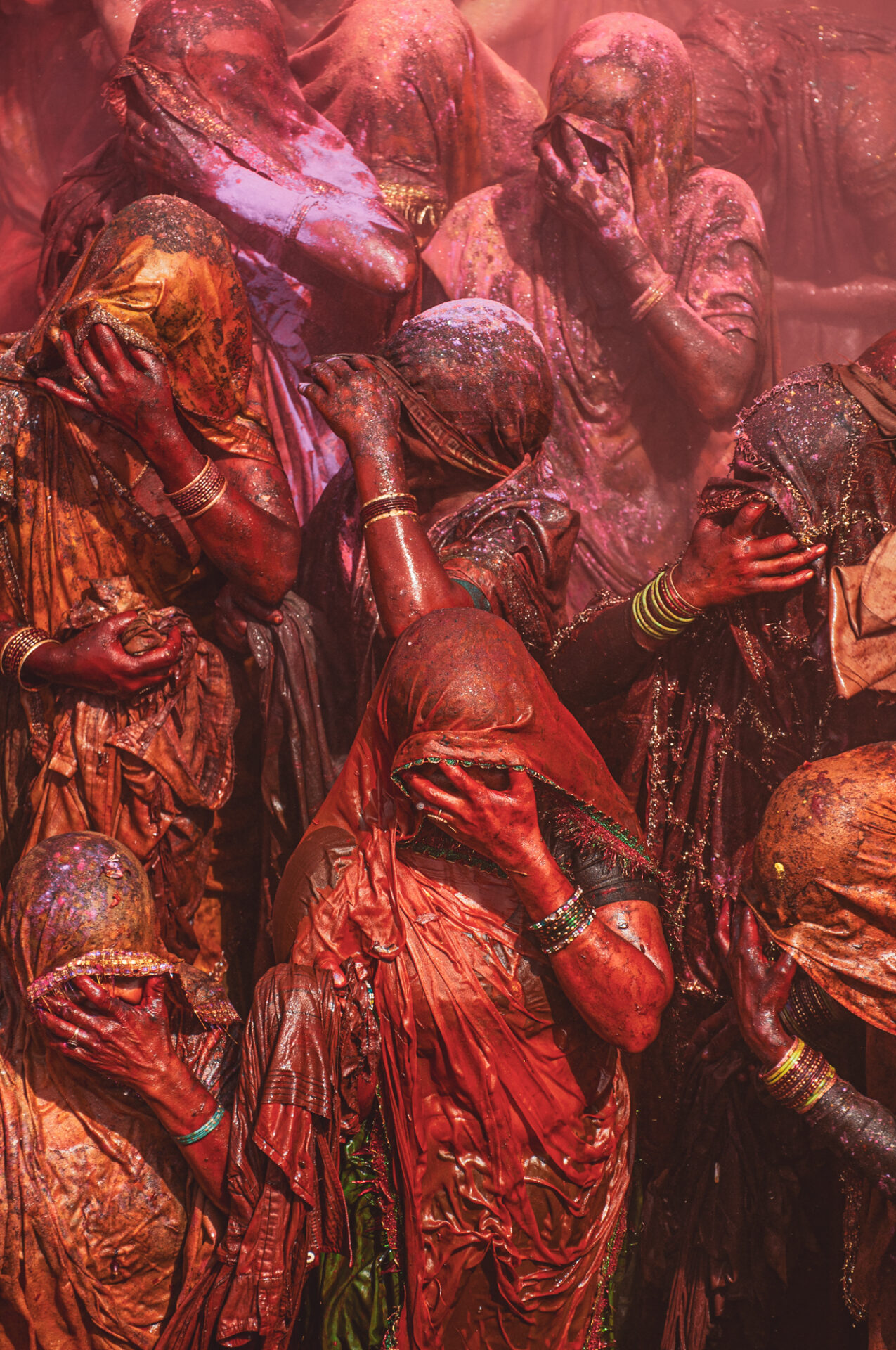
In India, where male dominance is often emphasized, Holi is a festival where women can actively participate.
Regardless of age, gender, wealth, or social class, people from all walks of life come together to celebrate this festival.
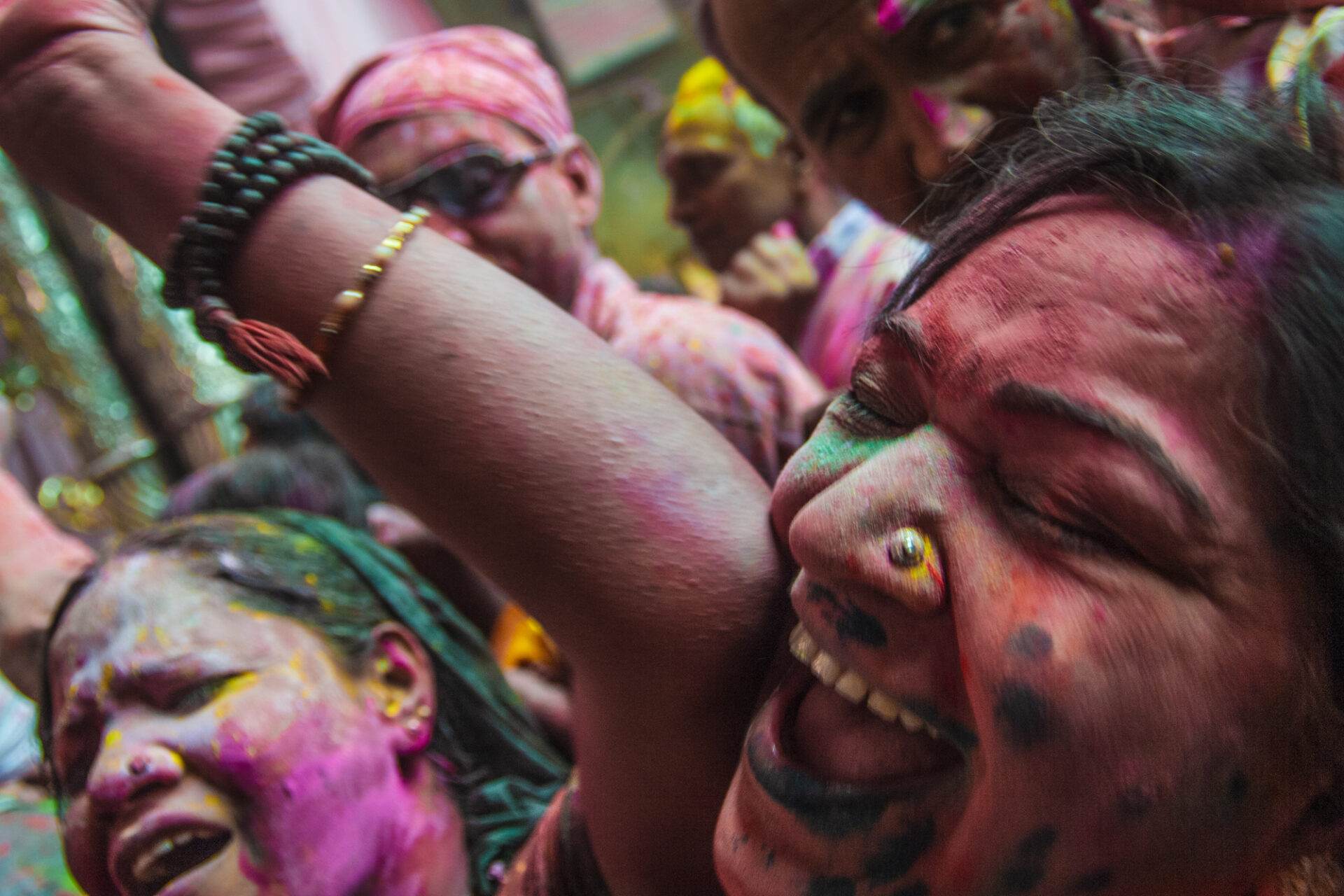
In rural India, a culture still remains where the going out of married women is restricted.
However, during the Holi festival, many women also go out with their families to enjoy the celebrations.
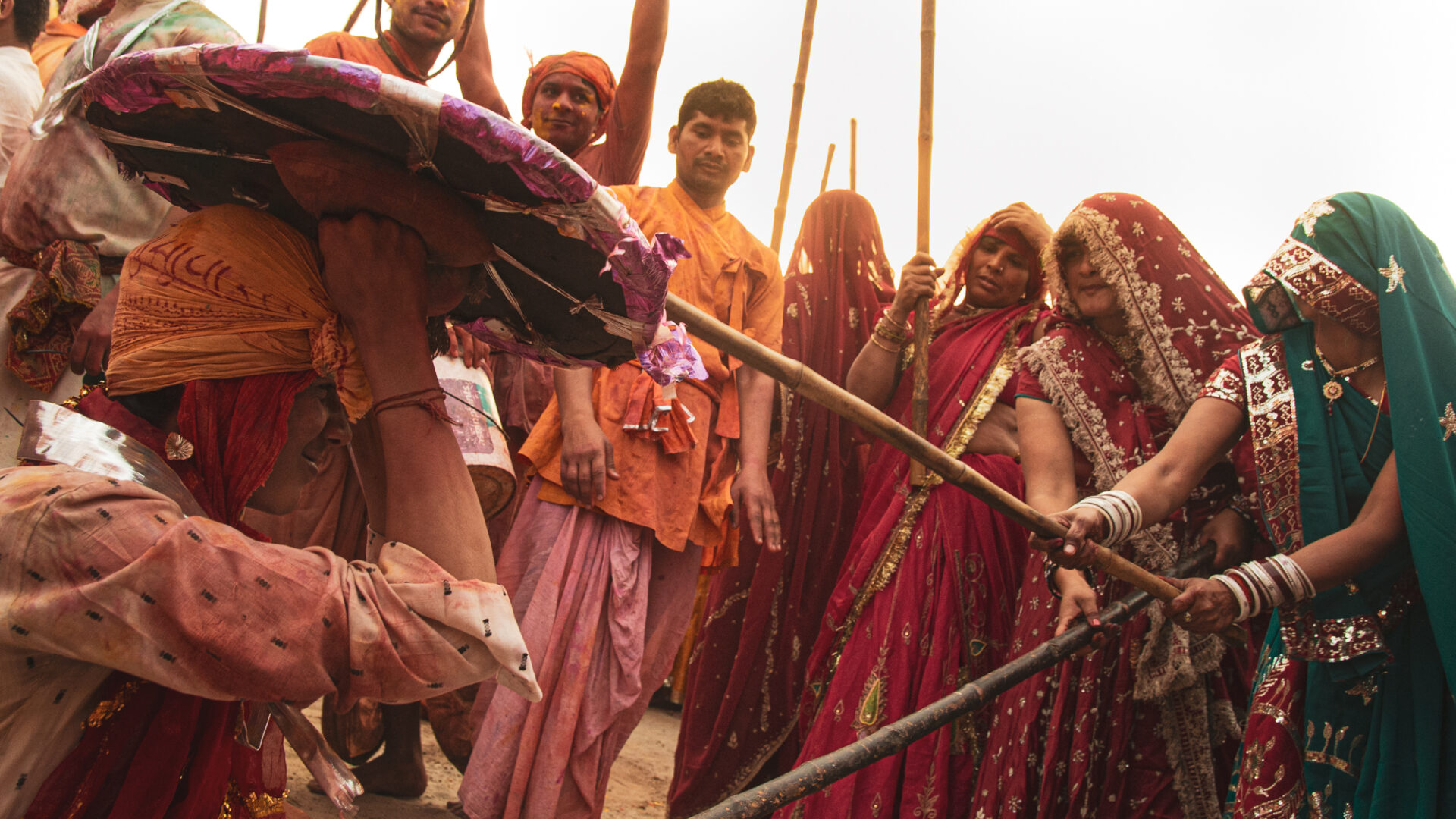
Women invite their friends and chase after men, playfully hitting them with sticks.
All of this is done in jest, with everyone gathered enjoying and participating.
This ritual can be witnessed throughout various neighborhoods of Mathura.
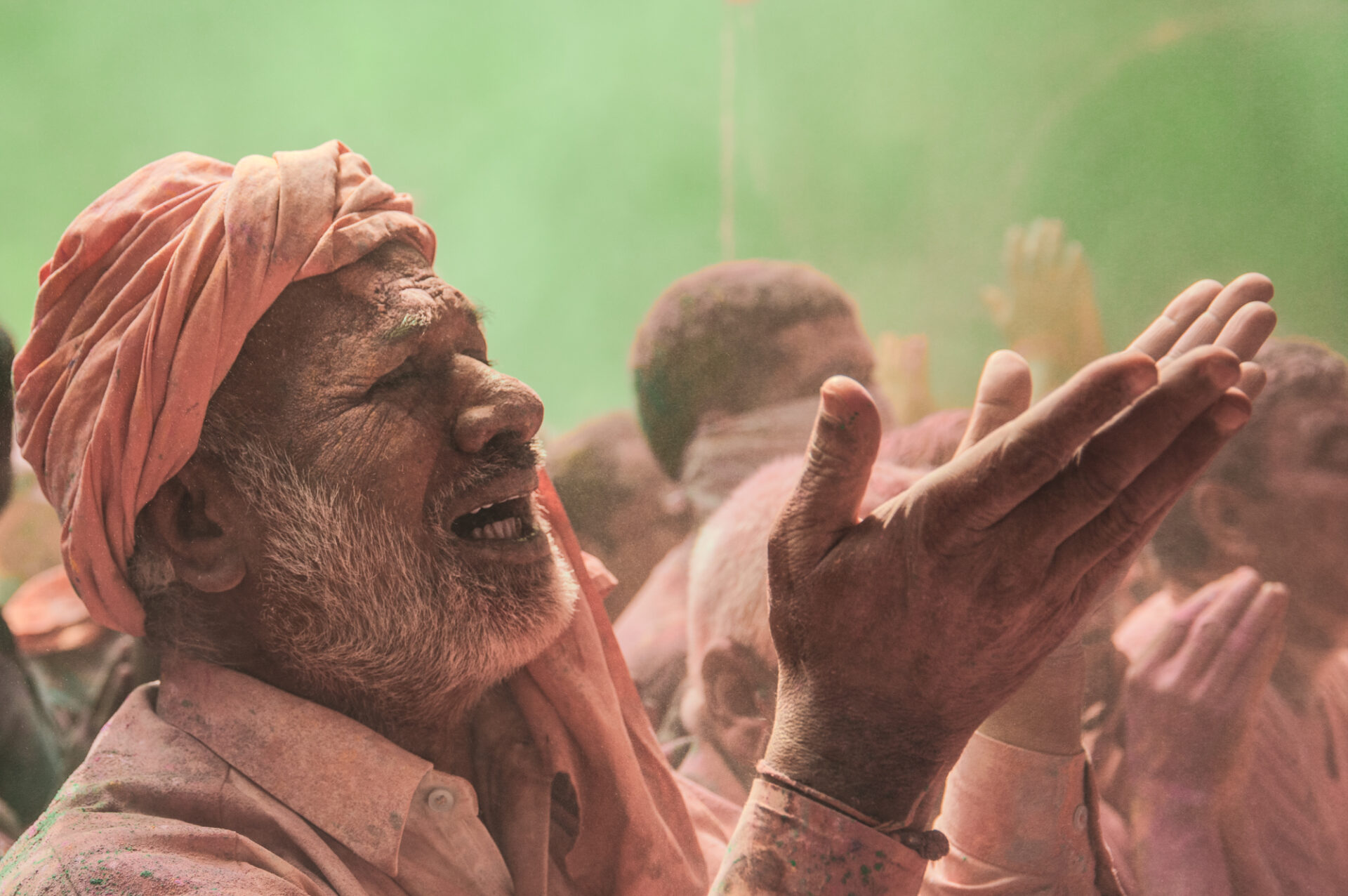
Prayers of thanksgiving are accompanied by tears.
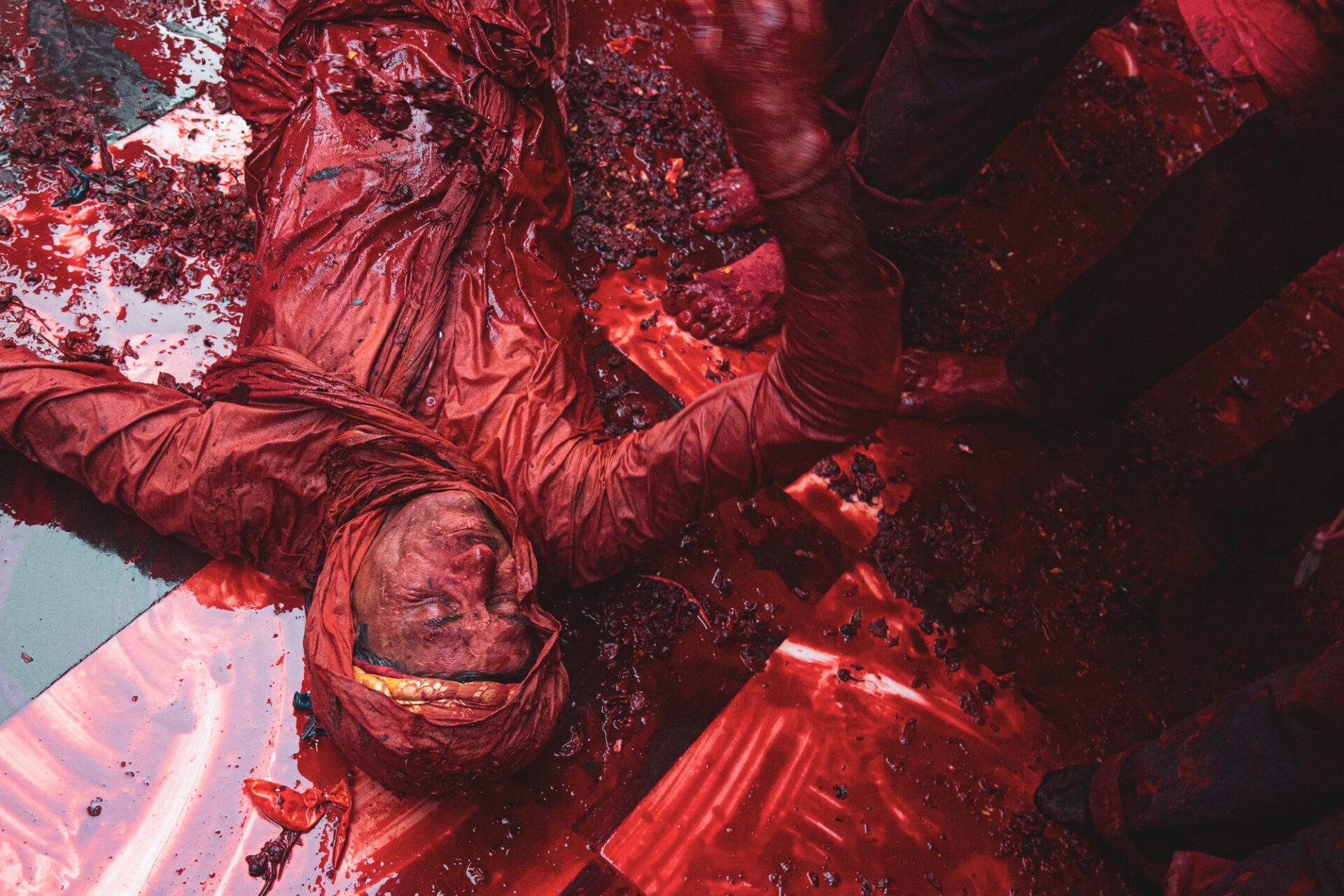
Man collapsing in a state of abandonment.

Entering a trance, she showed a fortunate expression, as if being embraced by a god.
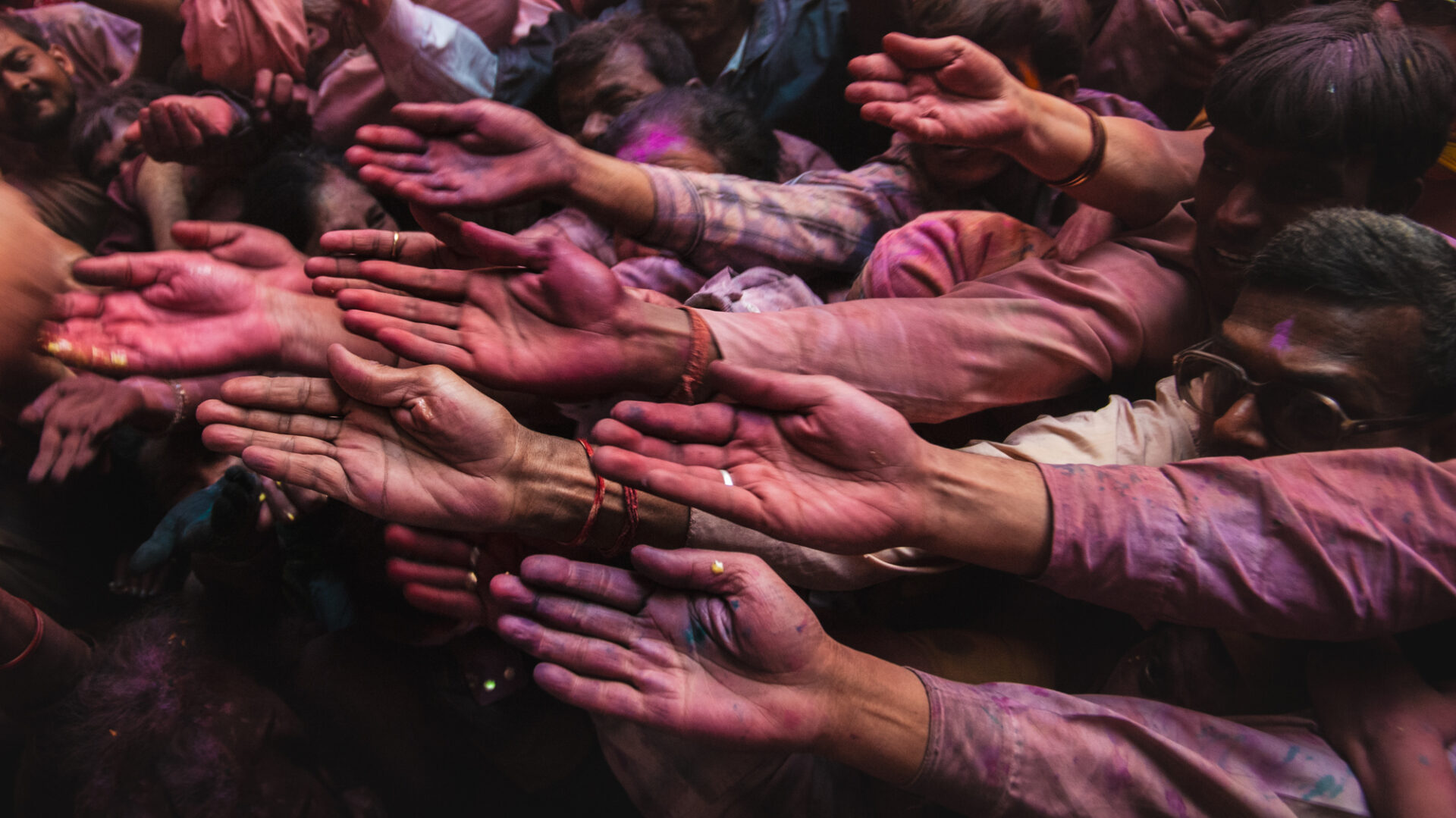
People trying to receive offerings to God from the priests.
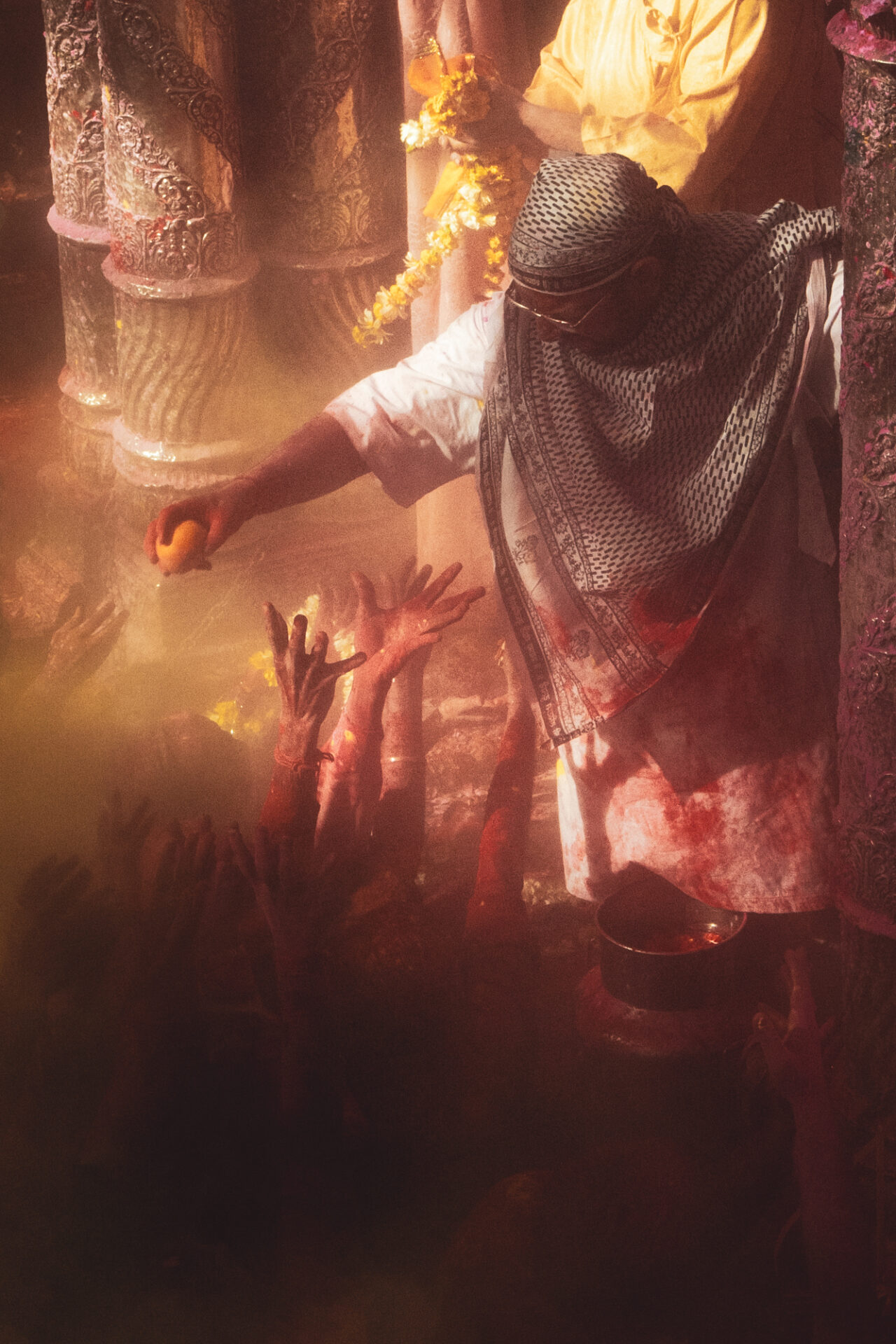
People believe that offerings are a way to receive blessings and protection from the gods.
Vibrant colors flew through the air, and I was swept up in the ecstatic energy of the Holi festival. The fervor was such that even those with cameras often found their equipment covered in colored water or even malfunctioning – the festival's enthusiasm sometimes engulfing everything, including photography gear.
Holi has transcended the boundaries of a mere religious event and is increasingly becoming a global celebration that attracts even those without religious beliefs. In other cultures, it might be seen more as a boisterous "color fight" than a spiritual observance. However, there's no doubt that this festival holds the potential to deepen understanding of diverse cultures and faiths.
From the numerous photographs I took at Holi, I've chosen those that particularly capture the figures of people deeply immersed in their faith. Their expressions and demeanor conveyed that this festival is not just a colorful event but a sacred ritual that stirs the soul. In a modern world rife with conflict and division, I believe such scenes offer a new perspective for fostering mutual understanding and respect between different faiths and cultures. It is the radiance of their enraptured souls that resonates deeply within us.
I truly felt the intensity of the festival when I returned to my hotel after photographing and took a shower. A large amount of colored water flowed from my ears, mouth, and nose, and the gritty sensation that remained in my mouth attested to the physical impact of the celebration.
Several years ago, it became known that vivid purple and reddish-purple colors contained harmful substances, and recently, these colors, especially purple pigments, are rarely seen. Newspaper reports at the time indicated that mercury, in particular, was used in purple. Behind the excitement of the festival, there were such health concerns.
However, the sacred appearance of people surrendering themselves to their faith and being dyed in colors seemed to transcend these concerns, symbolizing the very allure of this festival.
